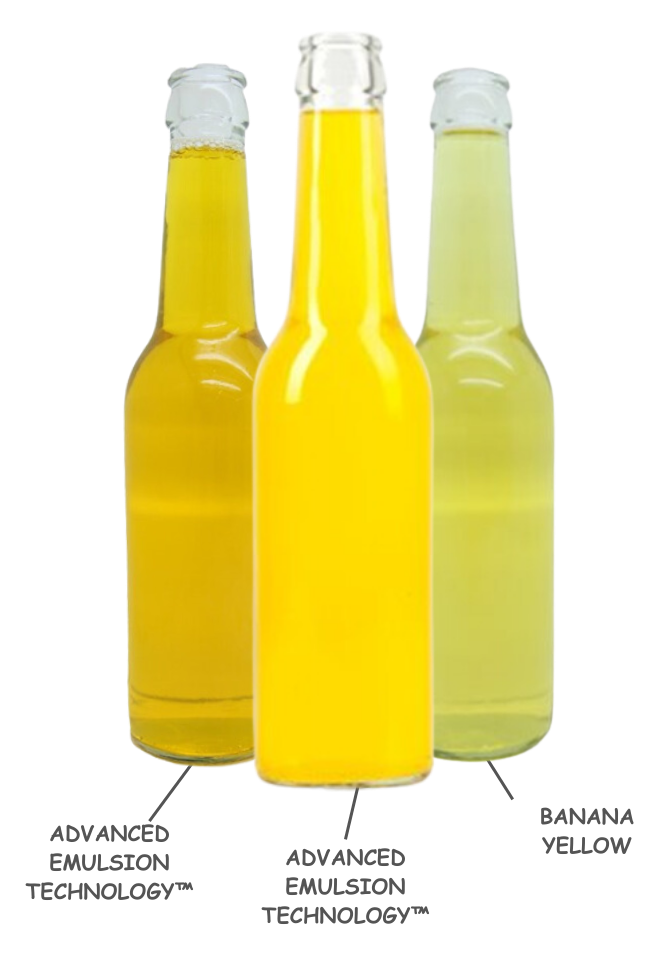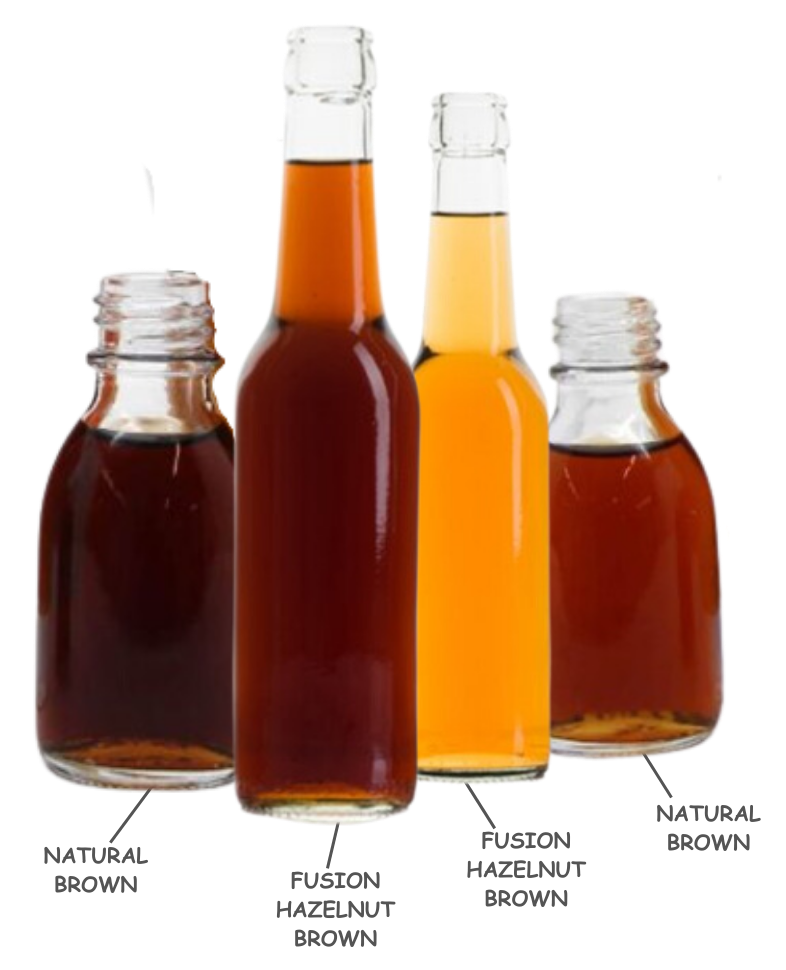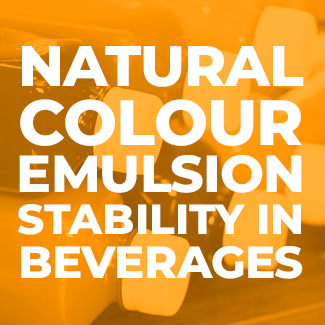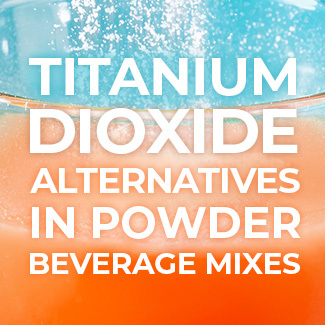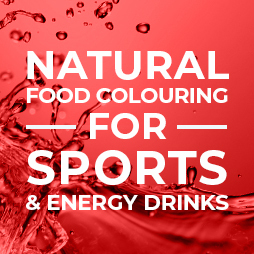A Natural Rainbow of Flavoured Malt Beverages
Flavoured malt beverages continue to dominate the alcohol beverage landscape, accounting for an impressive 29% of all alcohol beverage launches in 2024. This growth aligns with shifting consumer preferences, as 32% of German beer drinkers reported consuming fruit-flavoured beer in summer 2024 (Mintel 2024). With their ability to bridge the gap between traditional beers and refreshing, fruit-forward profiles, flavoured malt beverages are solidifying their place as a consumer favourite.

As the hard seltzer, tea, and beer-type mix categories gain traction in Europe, standing out in a crowded marketplace becomes increasingly challenging. One significant opportunity for brands lies in leveraging natural colours and colouring foods to create visually distinctive products. Sensient’s Value of Colour research revealed that vibrantly coloured beverages are able to positively influence purchase intent. In addition, brighter colours are often associated with a superior taste profile—an essential factor since flavour is a key driver of purchase decisions in this category. By emphasizing vivid, enticing colours, brands can effectively communicate the flavour experience to consumers before they even open the can or bottle. For Product Developers and Brand Managers crafting seltzers, beer-type mix drinks, mocktails, or cocktail-inspired beverages, investing in vibrant colours is an excellent strategy to enhance shelf appeal and resonate with flavour-driven consumers.
Given the health halo around these flavoured malt beverages, natural colours or colouring foods is the obvious selection for refreshing better-for-you alcoholic offerings. There are four key items to consider when formulating with colours from botanical sources in malt beverage systems…

Malt beverages typically have a low pH range of 3.0 to 3.5, which is optimal for natural colours allowing a broad spectrum of vibrant options. This acidity level is perfect for red and pink shades derived from anthocyanins, which provide appealing berry tones. Additionally, natural brown colours remain stable in this low-pH environment, adding depth and richness while maintaining a natural appeal.
Ingredient Interactions
In malt beverages ingredients, such as enzymes, proteins, minerals, and salts, can affect stability, especially in combination with added alcohol. For instance, anthocyanins, while normally very vibrant and effective, tend to show poor stability in these products. Given the variability across formulations, our technical team supports product development with a customized colour selection and thorough stability testing to ensure optimal results.

Though not as critical as pH, another consideration is light stability. Most natural colours are light stable, and their shades will survive light exposure from store shelf light to sunlight, with one exception–yellow shades from turmeric will fade over time. But don’t fret, because there are other natural yellows like beta-carotenes that also provide an excellent range of yellow shades from golden pineapple to bright starfruit.

Because this category is growing so quickly, many companies are moving fast with new formulas. One of the biggest challenges for emerging brands in this space is going from benchtop to bottling, particularly with an all-natural formulation. Order of ingredient addition in commercial scale-up can make a big difference in performance of natural colours and flavours. Our experts can proactively troubleshoot your processes to ensure smooth production runs that deliver a product that looks and tastes great.



Anthocyanins, like black carrot, can provide deep red shades in low pH malt beverages. Sensient’s Agronomy team has made great strides on black carrot color solutions, and our red or magenta black carrots are an extremely cost-effective option thanks to their dedicated work on pigment optimization.
Grape skin extract is another option in the red family, exhibiting more of a rose hue in these beverage systems, lending itself to Rosé and floral flavour profiles. At our Italy facility, Sensient partners with grape growers and winemakers to upcycle unused grape skins from the wine production process for natural colour extraction, which lends itself to a positive environmental responsibility story from a colour ingredient.
If you’re looking for an eye-catching bright pink shade, colour from purple sweet potatoes delight beverages with a stunning hot neon pink, perfect for sweet cocktails, flamingos, and unicorns.

Orange beta-carotenes perform well in low-alcohol beverages, and a variety of shades are available. Preferred cloudiness is also a colour consideration for developers. Some natural colours are inherently cloudy, while others have both clear and cloudy options available.
Colour from paprika extract produces the most brilliant orange shades, but it can also bring undesirable flavour off-notes to beverages. However, Sensient’s Pure-S™ gentle purification technology reduces and eliminates the paprika spice off-notes so you can unleash the full potential of nature’s brightest oranges in malt beverage applications.

Sensient offers a variety of yellow hue options for malt beverages. Yellow beta-carotenes are available and, although they are naturally oil-soluble, they can be effectively used in water-based malt beverage systems with emulsification. Sensient’s Advanced Emulsion Technology (AET™) reduces particle size, ensuring the stability of these oil-soluble natural colours.
Carthamus is another excellent option, providing a highly stable, bright yellow with transparent colouring properties, making it ideal for long-lasting colour stability in beverages. For bright yellow hues, Turmeric is also an option for bright yellow if the beverage package is opaque like cans, but due to light sensitivity, our expert color technologists do not typically recommend it for bottled beverages, as the bright yellow food colouring will fade over time when exposed to light.
GREENS
Creating green hues in beverages requires market specific guidance, as regulatory compliance differs by region. In Europe, Copper-Chlorophyllin-based solutions offer an effective way to achieve vibrant green tones, ideal for flavours like refreshing mint or tangy kiwi. This eye-catching hue can serve as a visual highlight in beverages, adding appeal to the final product. Copper-Chlorophyllin provides good acid stability, making it suitable for acidic beverage environments, ensuring the colour remains consistent and visually appealing.


Sensient’s Natural Brown solutions offer an variety of options for malt beverages, delivering appealing caramel or hazelnut hues crafted from natural sources. This platform provides a versatile alternative that allows to replace traditional caramel coloring. These natural brown shades are designed to remain stable across a wide pH range and resist both heat and light exposure, ensuring long-lasting colour integrity in malt beverage applications.
No matter what shade you want to create to enhance your taste profile, our beverage application experts are here to help!
If you see a shade you love above, feel to request a sample here.





